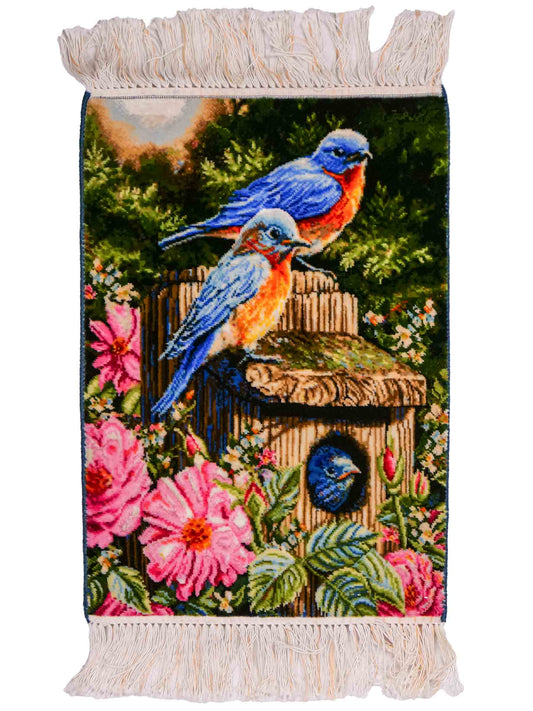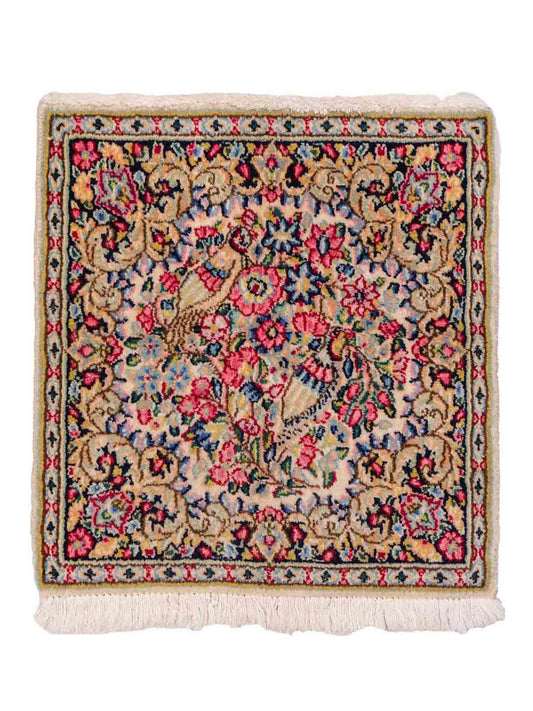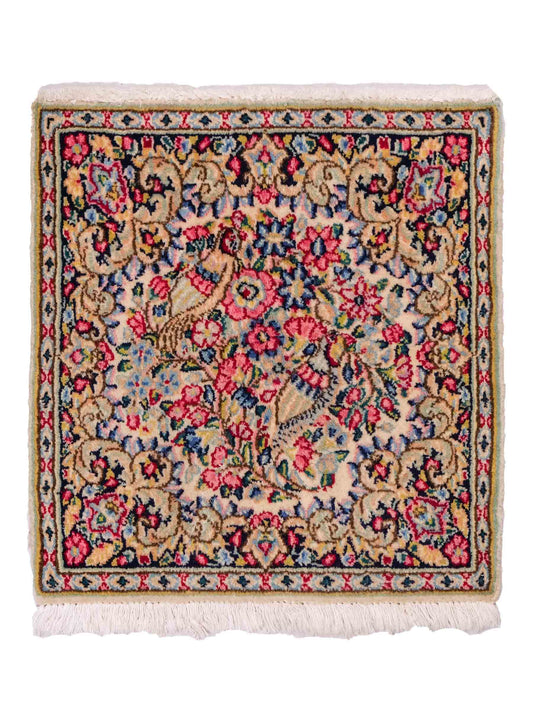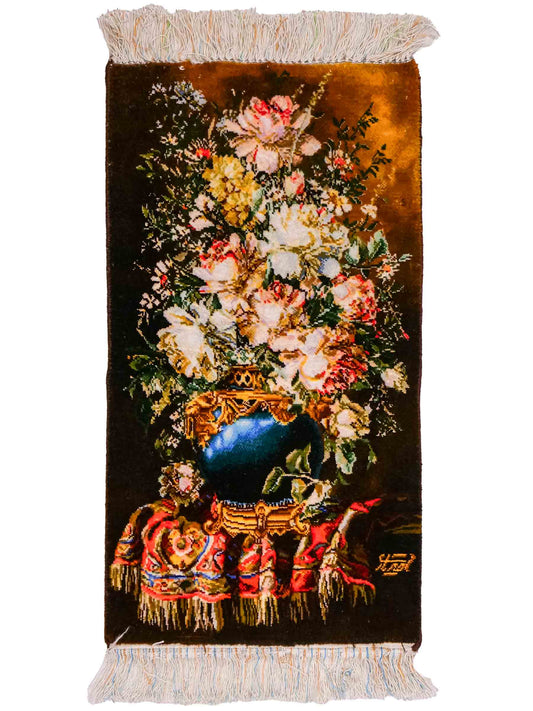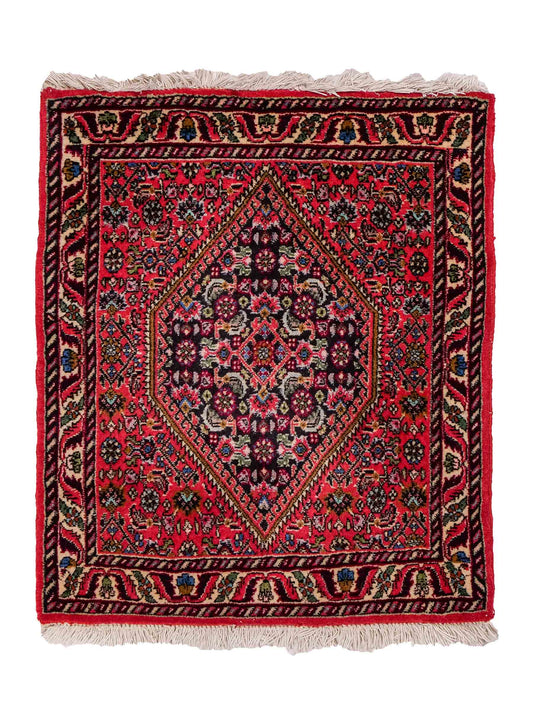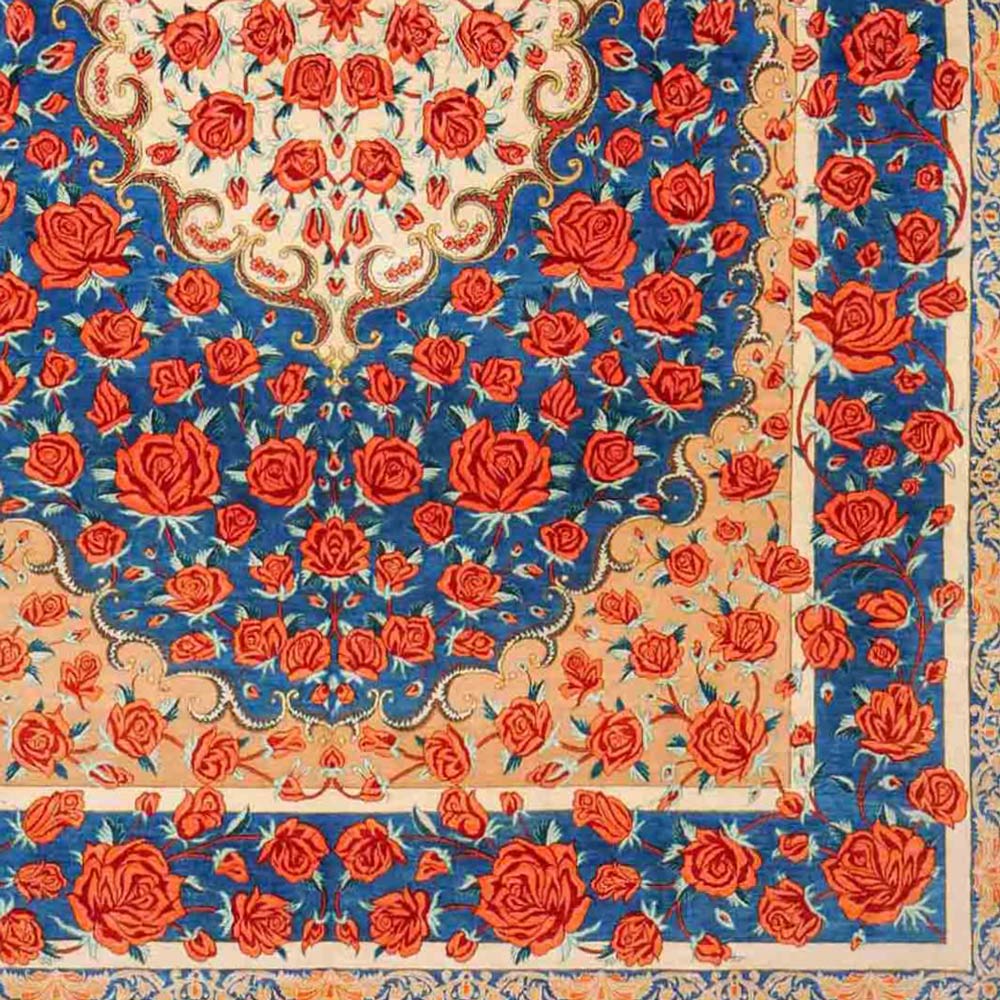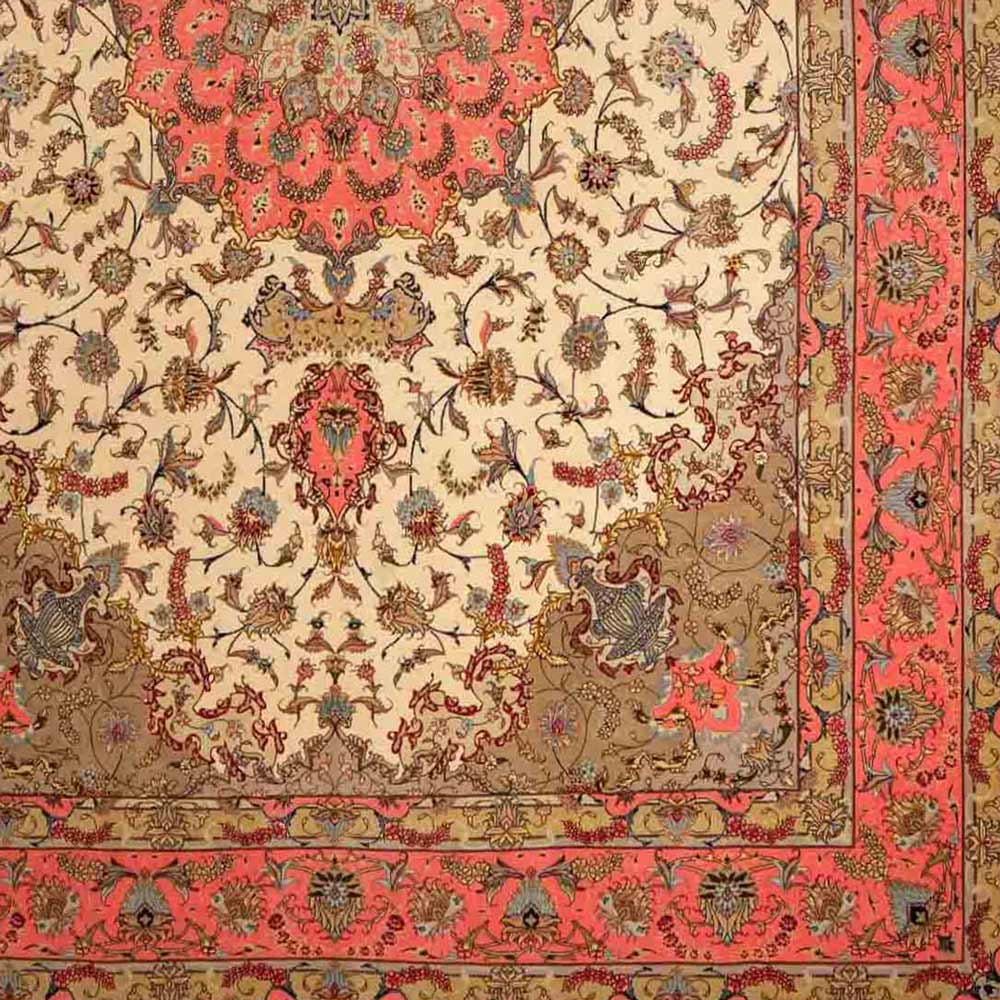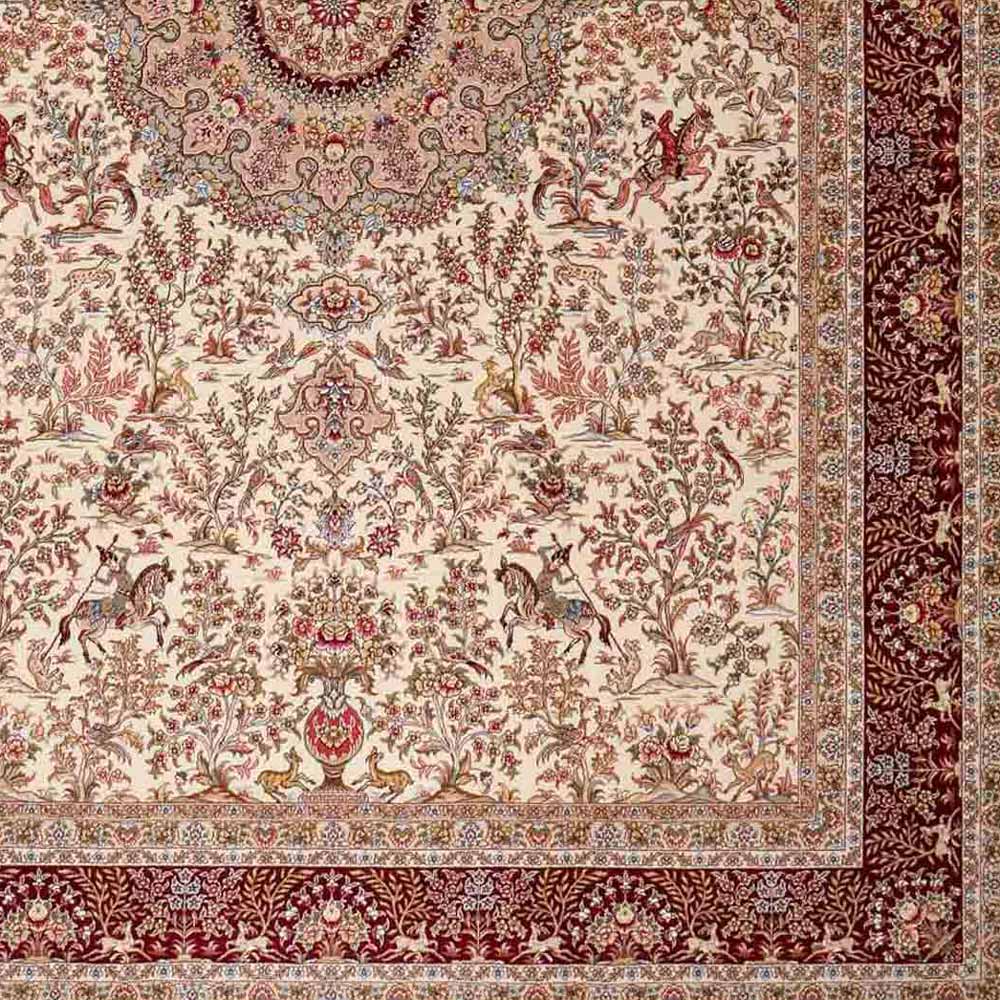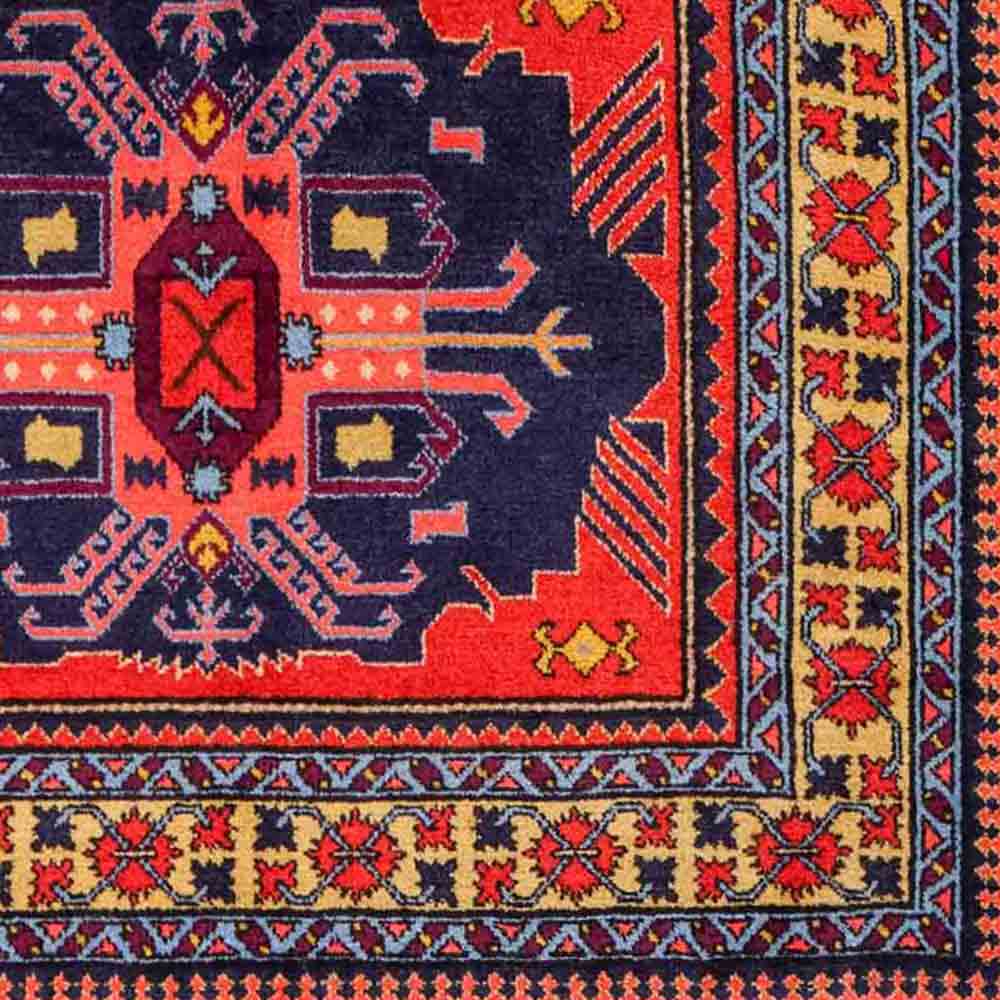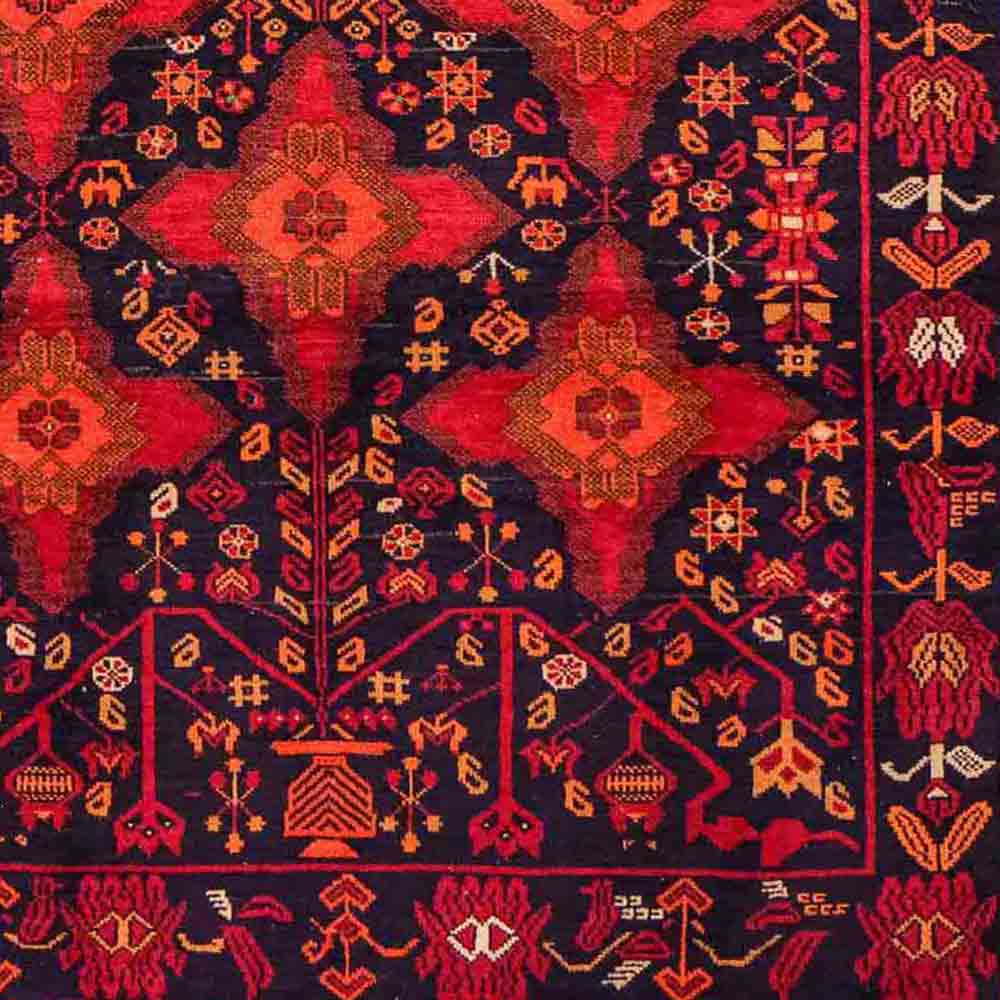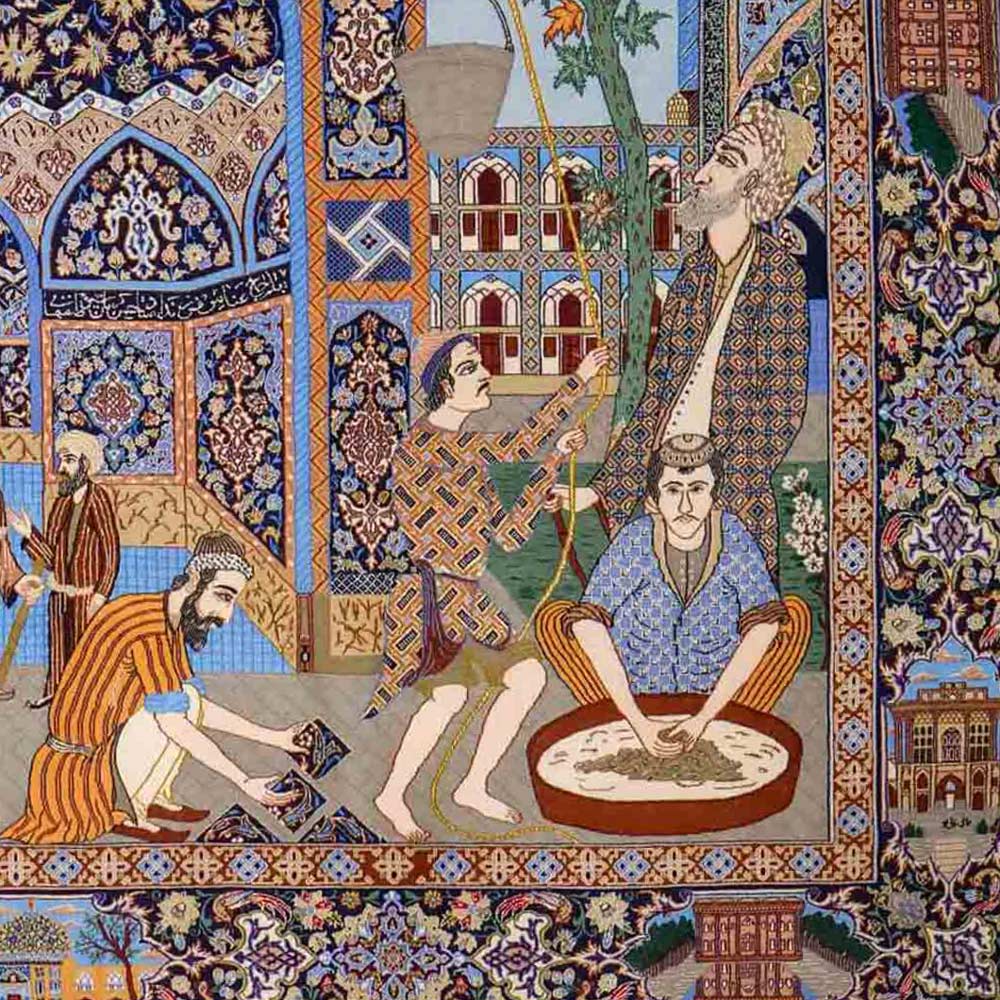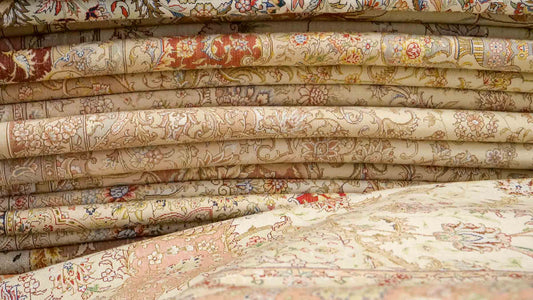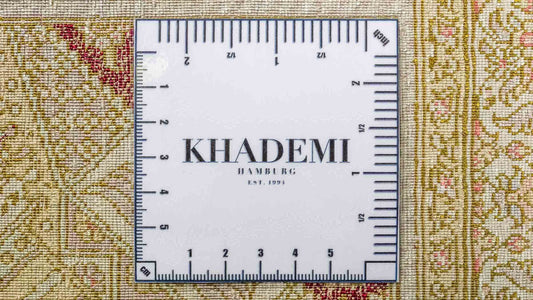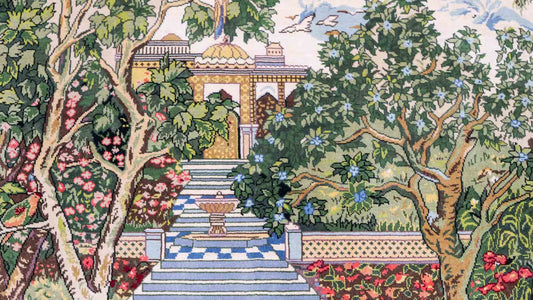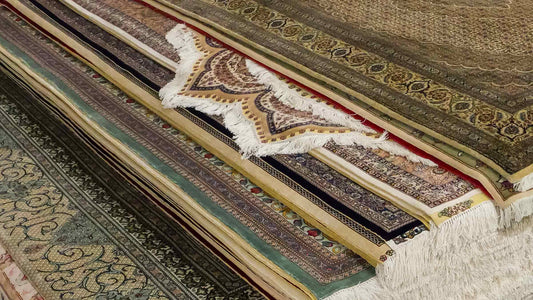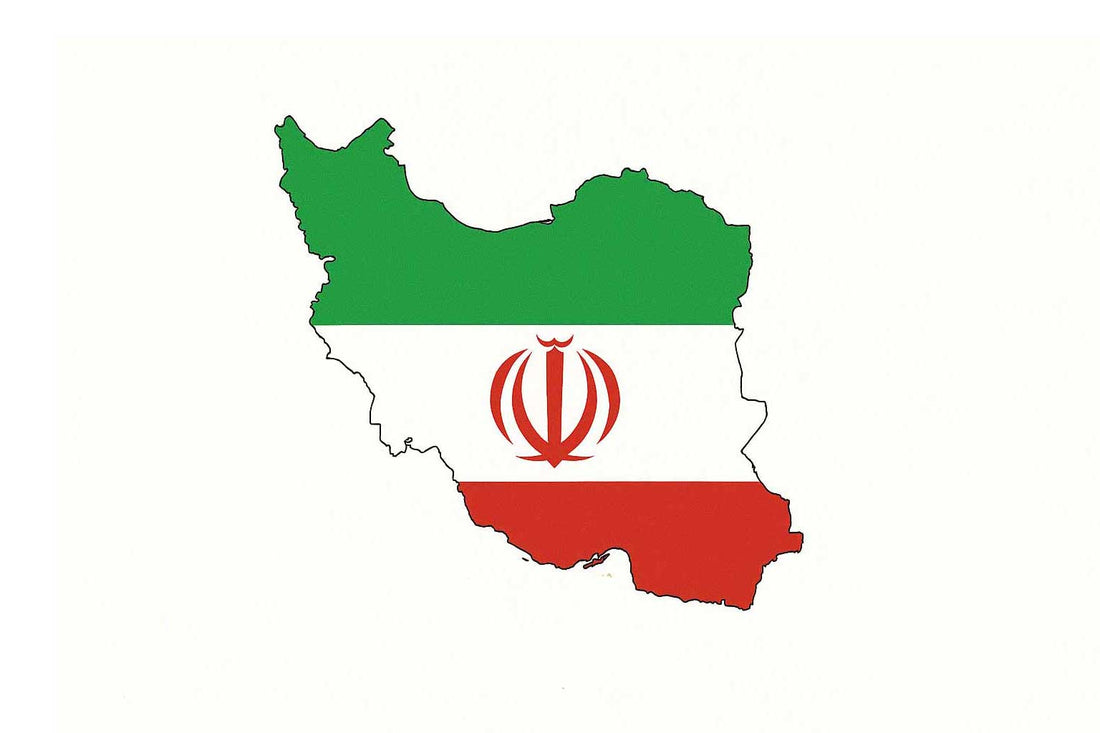
Iran: Persian Perfection from a Master's Hand
Daniel KhademiPersian rugs are far more than simple floor coverings—they are captivating works of art with a rich history and deep cultural meaning. In this article, we explore the fascinating universe of Persian carpets: their heritage, traditions, signature designs, materials, and the extraordinary craftsmanship that sets each rug apart.
Persian Rugs: Everything Important at a Glance
- Persian rugs: Symbols of luxury, tradition, and cultural identity
- Iconic motifs: Floral patterns, geometric designs, figurative scenes
- Materials: Premium wool, silk, cotton, and natural dyes
- Masterful craftsmanship: Asymmetrical (Persian) knot, up to 1,000,000+ knots per ㎡
- Renowned regions: Qom, Isfahan, Tabriz, Nain, Sarough, Kerman, Kashan
- Each rug is unique—and can be a valuable investment
Discover Our Exclusive Persian Rugs – Explore the Full Collection Now!
The History of Persian Rugs
The roots of Persian rug weaving trace back to the 5th century BC. Historical records show that rugs were originally crafted for royalty, adorning the majestic palaces and temples of ancient Persia. Renowned Persian carpets were often woven with gold or silver threads, underscoring their luxurious character.
A famous example from this era is the “Pazyryk Carpet,” discovered in Siberia in 1949 and dating to the 5th century BC. It is considered the oldest known hand-knotted carpet and offers fascinating insight into the art of ancient rug making.
Over the centuries, the art of carpet weaving evolved into a highly respected tradition in Iran, passed down through generations. Persian carpets became symbols of wealth and social status and remain a central part of Iranian culture today, recognized for their distinct regional styles and techniques.
Significance and Cultural Value of Persian Rugs
Persian rugs hold enormous significance in Iranian society. More than traditional décor, they embody both cultural identity and master craftsmanship. Every rug tells a story, reflecting the nation’s rich heritage. Owning a genuine Persian carpet is a sign of refined taste and respect for artistry.
These rugs are woven into everyday life—from daily use to festive occasions and special ceremonies. At Persian weddings, decorative rugs are lovingly laid out, and carpets play a key role in rituals and family gatherings. Many families treasure their rugs as prized heirlooms, often passing them down from generation to generation, with each piece connected to unique events or family histories.
Patterns, Designs & Regional Diversity of Persian Rugs
The designs of Persian rugs are incredibly diverse, with the most common motifs including:
- Floral Patterns: Inspired by nature, these motifs are artistically arranged to create vivid and harmonious designs. Carnations, roses, and other flowers are frequently featured, with variations across different regions.
- Geometric Forms: Defined by clear lines and structured layouts, these motifs lend rugs a modern aesthetic and are often blended with traditional elements.
- Figurative Imagery: Some carpets depict scenes or symbols from Persian mythology and history, including legendary figures like Rostam from the “Shahnameh.”
- Regional Styles: Each weaving center—Qom, Isfahan, Tabriz, and others—brings its own distinctive touch in color and form. Find out more in our Design Classics Blog.
Popular designs include medallion, tableau, and allover floral motifs, with every region expressing its local culture and artistic tradition. Many rug designs are influenced by the historical and social context of their region of origin.
High-Quality, Natural Rug Materials
The materials used in Persian rugs are the foundation of their quality and durability. The most common materials include:
- Wool: The primary material, valued for its resilience, softness, and natural warmth.
- Silk: Silk rugs are rarer and considered truly luxurious. Known for their unique luster and detailed craftsmanship—and premium price. Silk is also used for the warp in particularly fine carpets.
- Blends: Many rugs feature a combination of wool and silk to unite the strengths of both.
- Cotton: Mostly used for the warp threads, providing structural integrity and allowing for high knot density. Cotton’s softness and versatility make it a perfect partner for wool and silk.
Natural dyes, sourced from plants, roots, and minerals, are another hallmark of Persian carpet making—infusing each rug with vibrant color and environmental friendliness.
Persian Knotting Mastery: Exceptional Quality in Every Knot
At the heart of Persian rug making is the art of knotting, perfected over centuries. The most widely used technique is the “Persian knot”—also called the asymmetrical knot, Farsibaff, or Senneh knot. This method enables a high knot density, resulting in highly detailed and intricate patterns.
Rugs from regions like Qom, Isfahan, or Tabriz can feature over 1,000,000 knots per square meter—making them true masterpieces of textile art. The finer and denser the knotting, the greater the effort and the more precious the rug.
Types at a Glance:
- Prestige Rugs: Boasting exceptional densities of over 1,000,000 knots per square meter—hallmarks of absolute mastery.
- Luxury Rugs: Typically feature 300,000 to 1,000,000 knots per square meter.
- Quality Rugs: From regions like Ardabil or Hamadan, often with lower knot counts but notable for lasting construction and attractive designs.
The complexity and time required to craft such rugs are enormous: seasoned artisans may spend months or even years weaving a single, exceptionally fine piece—one reason these rugs are so valuable.
Famous Persian Rug Provinces and Their Signature Styles
Some of the most renowned provinces for Persian rug weaving include:
| Region | Signature Features |
Colors & Designs | Highlights / Specialties |
| Qom (Qum) | Intricate, often pictorial patterns | Cream, gold, red, blue, green, pastels |
Pure silk rugs, high collectible value, exceptional fineness & quality |
| Isfahan | Highly detailed, classic symmetry, floral & garden motifs | Ivory, blue, red, green | Silk accents, ultra-fine knotting, artistic elegance |
| Tabriz | Finely knotted, precise, medallion and floral motifs |
Red, blue, ivory, pastel tones | Wide design variety, high knot density, world-renowned workshops |
| Nain | Elegant, refined, arabesque elements | Ivory, blue, beige | Often wool-silk blends, high knot count, intricate details |
| Kashan | Central medallion, floral arabesques | Deep red, blue, beige | Traditional charm, historic workshops, consistently high quality |
| Kerman | Large medallions, lavish floral patterns |
Red, blue, green, ivory | Classic vase & garden motifs, vintage appeal |
| Heriz | Bold geometric medallions, robust construction |
Rust, deep red, blue, earth tones | Extremely durable, coarser knots, long-lasting |
| Mashhad | Central medallion, flowing designs | Deep red, navy, cream | Large formats, especially dense wool, timeless style |
| Bijar | Extremely dense, compact, “iron rug” reputation |
Strong red, blue, ivory, earthy tones | Highly durable, heavy structure, tribal-inspired motifs |
| Sarouk | Floral allover or medallion designs, fine craftsmanship | Salmon, navy, pink, beige | Classic elegance, retains value, excellent clarity |
| Gabbeh | Naïve, tribal, playful, minimalist | Cream, yellow, red, earth tones | Thick wool, bold simple patterns, modern appeal |
| Hamadan | Simple, sturdy, often allover designs |
Red, blue, beige, brown | Extremely durable, rustic patterns, affordable gateway rug |
| Ardabil | Large medallions, delicate geometric & floral details |
Blue, red, gold, cream | Famous for the “Ardabil Carpet”, clear patterns, harmonious look |
Care & Value Retention of Persian Rugs
Hand-knotted rugs from Iran / Persia are extremely durable when properly maintained—and remain enduringly popular as investments.
Care Tips:
- Avoid direct sunlight
- Use mild cleaning products only
- Rotate your rug regularly
For more detailed advice, visit our blog post: *How to Care for Hand-knotted Rugs*.
If you are interested in purchasing an antique or luxury rug, we recommend requesting an expert appraisal and reading our article: *Are Hand-Knotted Rugs a Good Investment?*
Checklist: How to Identify a High-Quality Persian Rug
- Hand-knotted Authenticity: Look for subtle irregularities in the pattern and on the back—these are clear signs of genuine hand craftsmanship.
- Knot Density: Top-grade Persian rugs feature at least 200,000 knots per square meter; luxury pieces may even exceed 1,000,000. The higher the knot count, the finer and more valuable the rug.
- Material: True Persian rugs are made from premium wool, often with touches of silk and a cotton foundation. Steer clear of synthetic fibers.
- Brilliant, Natural Colors: Colors should be harmonious, colorfast, and usually derived from plant or mineral dyes. Beware of cheap-looking, overly shiny finishes.
- Design & Patterns: Traditional motifs—such as medallions, garden scenes, floral arabesques, and geometric designs—should be intricate, symmetrical, and beautifully balanced.
- Back Inspection: The pattern should be nearly as visible on the back as on the front—a key indicator of quality.
- Regional Markers: Each origin (Tabriz, Isfahan, Nain, Kashan, etc.) has its own distinctive style, colors, and knotting technique.
- Soft Yet Sturdy Texture: The rug should feel dense and supple, never stiff or rigid.
- Certificate of Authenticity: Reputable dealers always provide a certificate of origin and transparency about production. At JUPITER Intl, every hand-knotted, hand-tufted, and hand-woven rug comes with a Certificate of Authenticity.
- Expert Advice: When in doubt, seek a professional appraisal or consult a certified rug expert.
With this checklist, you can confidently select a superior Persian rug—ensuring lasting beauty, genuine value, and enduring elegance in your home.
FAQ: Persian Rugs from Iran
How can I recognize a genuine Persian rug?
► Look for fine knotting, regional patterns, authenticity certificates, and natural materials. See our expert guides for more!
What determines the value of a Persian rug?
► Key factors include origin, knot density, materials, age, and condition.
Are Persian rugs a stable investment?
► Top-quality pieces from famed regions with high knot density often appreciate in value over time.
How do I care for my Persian rug?
► Gentle cleaning, protection from sunlight and dampness, and professional care—see our Rug Care Guide for details.
Conclusion
Persian rugs are true masterpieces—embodying history, culture, and artisan skill. They’re not just beautiful décor, but valuable heirlooms that pass down stories from generation to generation. With their unique patterns and deep tradition, Persian rugs are timeless investments in beauty and elegance. Whether you adore traditional art or prefer modern aesthetics, the world of Persian rugs has something for everyone. The passion and dedication of Persian weavers is reflected in every knot, making each rug a unique work of art and a treasure for both collectors and connoisseurs. Additionally, high-quality Persian rugs can be potential investments that grow in value over time.
Discover our selection of authentic Persian Rugs and get personal advice—your perfect piece of “Persian Perfection” awaits!
Want to learn more? Discover our related blog articles → Design Classics, Countries of Origin, Carpet Materials, Carpet Guide

